-
 Bitcoin
Bitcoin $104,975.5432
-0.20% -
 Ethereum
Ethereum $2,515.3929
-0.61% -
 Tether USDt
Tether USDt $1.0004
0.00% -
 XRP
XRP $2.1330
-0.02% -
 BNB
BNB $641.9793
-1.43% -
 Solana
Solana $144.3011
-0.71% -
 USDC
USDC $0.9999
0.02% -
 Dogecoin
Dogecoin $0.1771
0.15% -
 TRON
TRON $0.2709
0.61% -
 Cardano
Cardano $0.6227
-1.55% -
 Hyperliquid
Hyperliquid $39.6768
-2.27% -
 Sui
Sui $2.8783
-4.78% -
 Chainlink
Chainlink $13.0341
-1.12% -
 Bitcoin Cash
Bitcoin Cash $425.3340
-1.89% -
 UNUS SED LEO
UNUS SED LEO $9.0516
0.19% -
 Avalanche
Avalanche $18.9587
-0.87% -
 Stellar
Stellar $0.2557
-0.93% -
 Toncoin
Toncoin $2.9385
-1.37% -
 Shiba Inu
Shiba Inu $0.0...01202
1.12% -
 Hedera
Hedera $0.1537
-1.25% -
 Litecoin
Litecoin $85.0043
0.53% -
 Polkadot
Polkadot $3.7602
-0.25% -
 Ethena USDe
Ethena USDe $1.0004
0.02% -
 Monero
Monero $309.8228
-0.01% -
 Dai
Dai $0.9999
0.01% -
 Bitget Token
Bitget Token $4.5177
0.19% -
 Pepe
Pepe $0.0...01093
1.14% -
 Uniswap
Uniswap $7.2415
-3.44% -
 Pi
Pi $0.6077
7.67% -
 Aave
Aave $271.5122
-3.75%
Impermanent loss in contract trading: How to reduce losses when hedging?
Impermanent loss in contract trading occurs when hedging causes unrealized losses due to price movements, funding fees, and slippage, especially in volatile markets.
Jun 14, 2025 at 10:49 am
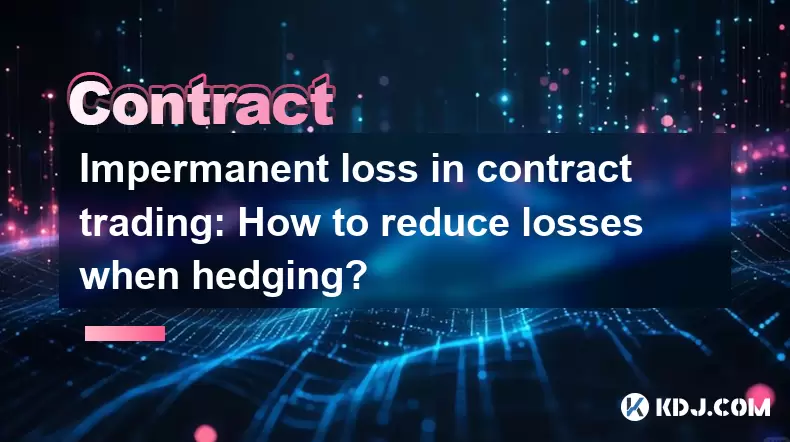
Understanding Impermanent Loss in Contract Trading
Impermanent loss is a term commonly associated with liquidity provision in decentralized finance (DeFi), but it also plays a significant role in contract trading, especially when traders hedge their positions. In the context of contract trading, impermanent loss occurs when a trader opens both long and short positions to hedge against market volatility, and due to price movements, one side gains while the other incurs a loss that isn't yet realized.
This phenomenon is particularly relevant in futures trading and perpetual contracts, where traders may open offsetting positions to protect against downside or upside risk. While hedging can reduce exposure, it does not eliminate losses entirely, especially if the market moves unpredictably or spreads widen.
Impermanent loss becomes permanent only when positions are closed at unfavorable prices.
The Mechanics Behind Hedging and Impermanent Loss
When a trader uses hedging strategies in contract trading, they typically open two opposite positions—such as a long on a spot asset and a short on a futures contract. The goal is to neutralize directional risk. However, due to factors like market slippage, funding fees, and price divergence, the expected balance between the two positions may not hold.
For instance, in perpetual contracts, funding rates adjust periodically based on whether the contract trades above or below the spot price. If a trader hedges during a high volatility period, the cost of funding can eat into profits or amplify losses.
- Funding fees can accumulate over time, making long-term hedging expensive.
- Price divergence between spot and futures markets can create unbalanced profit/loss scenarios.
- Slippage during volatile periods can cause entry and exit points to differ from expectations.
Strategies to Reduce Impermanent Loss When Hedging
To minimize impermanent loss in contract trading, traders must adopt precise hedging techniques and monitor several key variables:
- Use tight stop-loss and take-profit levels to limit exposure on both sides of the hedge.
- Optimize position sizing so that neither the long nor the short dominates the portfolio during rapid price swings.
- Choose low-fee exchanges with minimal funding rate discrepancies to reduce overhead costs.
- Monitor correlation between assets being hedged; weak correlation increases the likelihood of imbalance.
Traders should also consider using delta-neutral strategies, where the total exposure of both positions offsets each other almost completely. This requires continuous rebalancing as prices fluctuate.
Timing Your Hedge Correctly
One of the most overlooked aspects of reducing impermanent loss is timing. Entering a hedge too early or too late can significantly affect the outcome.
- Avoid hedging during high volatility unless you have a clear directional bias.
- Set up alerts for major market events that could trigger sudden price shifts.
- Use technical indicators such as Bollinger Bands or RSI to identify optimal entry and exit points.
By aligning hedging activities with market conditions and avoiding emotional decisions, traders can better manage potential losses.
Utilizing Tools and Platforms Effectively
Modern trading platforms offer tools that can help mitigate impermanent loss through automation and analytics:
- Automated trading bots can execute hedges based on predefined conditions, minimizing human error.
- Cross-margin accounts allow better allocation of capital across multiple positions without liquidation risks.
- Real-time dashboards provide insights into funding costs, unrealized P&L, and margin utilization.
Using these tools wisely can enhance decision-making and reduce the impact of impermanent loss.
Frequently Asked Questions
Q1: Is impermanent loss exclusive to DeFi or does it apply to traditional futures trading as well?
While the term "impermanent loss" originated in DeFi, especially around liquidity pools, the concept applies broadly to any situation where offsetting positions result in unrealized losses due to price movement. Traditional futures traders also experience similar effects when hedging.
Q2: Can I completely eliminate impermanent loss when hedging crypto contracts?
It's nearly impossible to fully eliminate impermanent loss because market dynamics like slippage, funding fees, and price divergence are inherent in contract trading. However, strategic planning, precise timing, and effective use of tools can significantly reduce its impact.
Q3: What happens if I close my hedged positions before the impermanent loss becomes permanent?
Closing positions before realizing a loss can prevent impermanent loss from becoming permanent. However, this approach requires accurate market timing and may result in missed profit opportunities if the market later reverses.
Q4: How do funding fees influence impermanent loss in perpetual contracts?
Funding fees in perpetual contracts can add up over time, especially when holding hedged positions for extended periods. These fees can erode gains or magnify losses depending on the direction of the market and the frequency of adjustments required to maintain the hedge.
Disclaimer:info@kdj.com
The information provided is not trading advice. kdj.com does not assume any responsibility for any investments made based on the information provided in this article. Cryptocurrencies are highly volatile and it is highly recommended that you invest with caution after thorough research!
If you believe that the content used on this website infringes your copyright, please contact us immediately (info@kdj.com) and we will delete it promptly.
- Trump Media & Technology Group (TMTG) Launches Bitcoin and Decentralized Finance (DeFi) Market-Targeting Digital Wallet
- 2025-06-15 02:55:12
- Avalanche (AVAX) will host a live stream on May 2nd at 16:00 UTC.
- 2025-06-15 02:55:12
- Bitcoin (BTC) Enters May 2025 With Renewed Momentum, Gaining Over 14% in the Past 30 Days
- 2025-06-15 02:50:12
- aUSDC is now spendable on MetaMask Card
- 2025-06-15 02:50:12
- SHIB Burn Rate Registers a Five-Digit Spike as Millions of Tokens Get Wiped Out of Circulation
- 2025-06-15 02:45:14
- Band Protocol (BAND) Has Started Band Oracle v.3.0 Testnet Phase 2
- 2025-06-15 02:45:14
Related knowledge
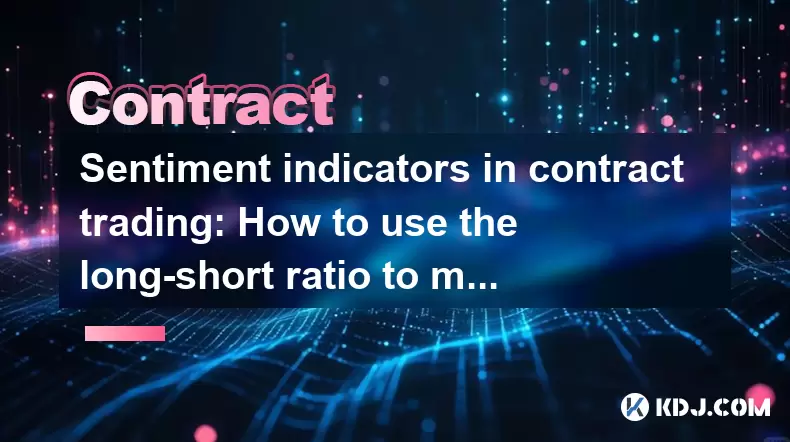
Sentiment indicators in contract trading: How to use the long-short ratio to make decisions?
Jun 14,2025 at 07:00am
What Are Sentiment Indicators in Contract Trading?In the realm of cryptocurrency contract trading, sentiment indicators play a crucial role in gauging market psychology. These tools help traders understand whether the market is dominated by bullish or bearish expectations. Among these indicators, the long-short ratio stands out as one of the most tellin...
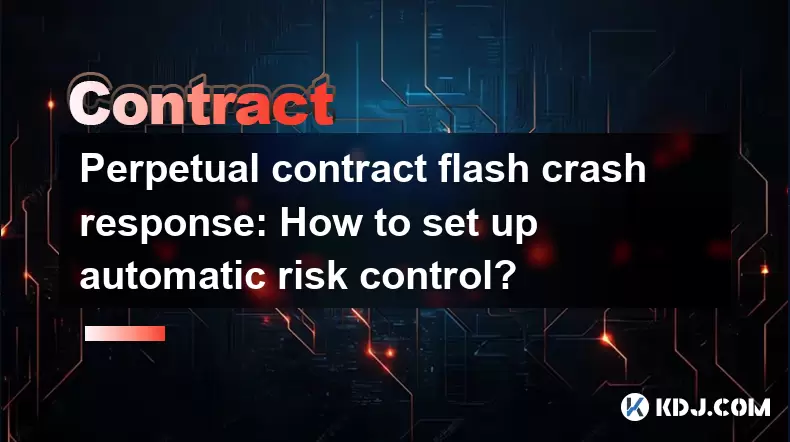
Perpetual contract flash crash response: How to set up automatic risk control?
Jun 13,2025 at 06:28pm
Understanding Perpetual Contract Flash CrashesA flash crash in the context of perpetual contracts refers to a sudden, sharp, and often short-lived drop or spike in price due to high volatility, thin order books, or algorithmic trading activities. These events can lead to massive liquidations across long or short positions on trading platforms. Traders m...
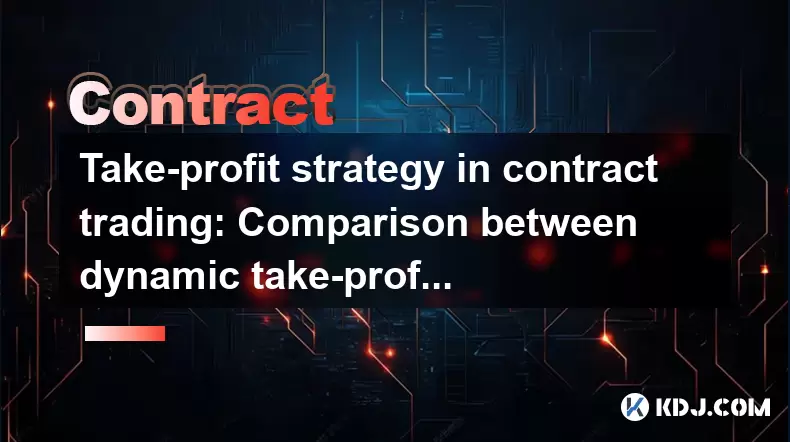
Take-profit strategy in contract trading: Comparison between dynamic take-profit and fixed take-profit
Jun 14,2025 at 07:08am
What Is Take-profit in Contract Trading?In the realm of cryptocurrency contract trading, take-profit refers to a predefined price level at which a trader automatically closes a profitable position. This mechanism is essential for risk management and profit locking. Traders use take-profit orders to ensure they secure gains without being swayed by emotio...
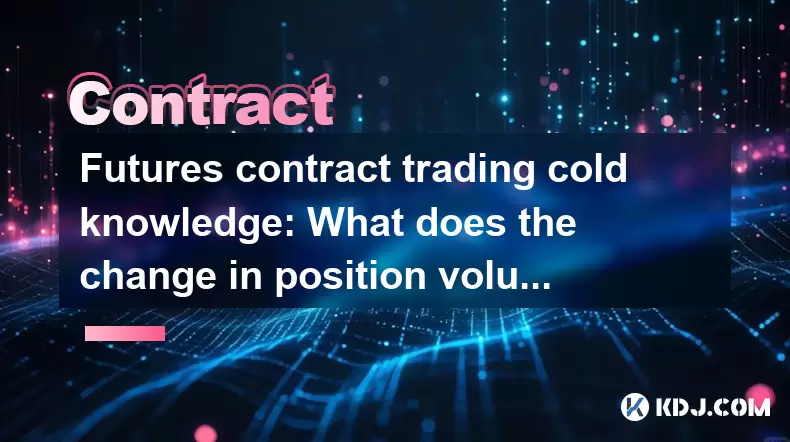
Futures contract trading cold knowledge: What does the change in position volume indicate?
Jun 14,2025 at 09:22pm
Understanding Position Volume in Futures Contract TradingIn the world of futures contract trading, position volume is a key metric that often goes overlooked by novice traders. Unlike simple price or volume indicators, position volume reflects the total number of open contracts at any given time. This metric provides insights into market sentiment and c...
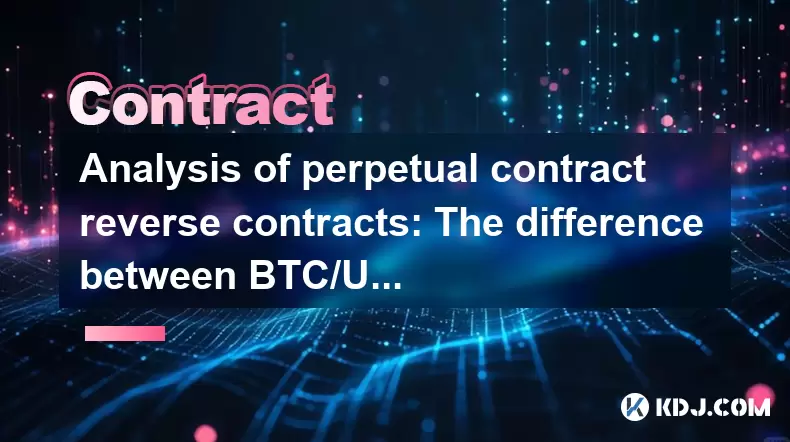
Analysis of perpetual contract reverse contracts: The difference between BTC/USD and USD/BTC
Jun 15,2025 at 03:49am
Understanding Perpetual Contracts in Cryptocurrency TradingIn the realm of cryptocurrency derivatives, perpetual contracts have become a cornerstone for both novice and seasoned traders. Unlike traditional futures contracts that have an expiration date, perpetual contracts can be held indefinitely. This feature allows traders to maintain positions as lo...
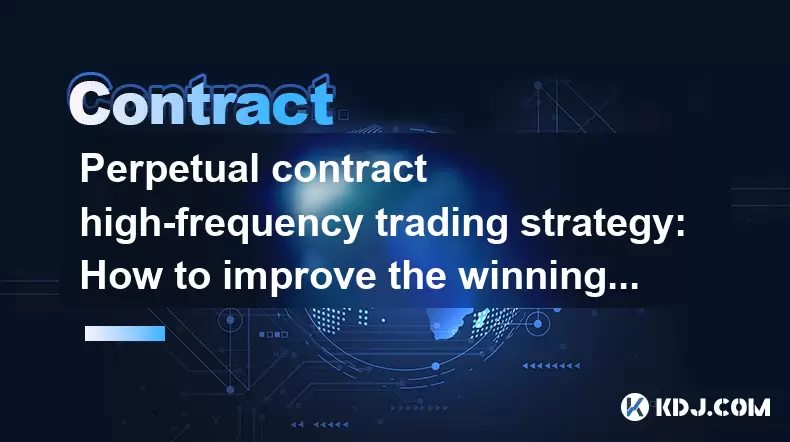
Perpetual contract high-frequency trading strategy: How to improve the winning rate of short-term brushing?
Jun 13,2025 at 04:14pm
Understanding the Basics of Perpetual ContractsPerpetual contracts are derivative financial instruments that allow traders to speculate on the price movement of an asset without owning it. Unlike traditional futures, perpetual contracts have no expiration date, making them ideal for short-term trading strategies like high-frequency trading (HFT). In the...

Sentiment indicators in contract trading: How to use the long-short ratio to make decisions?
Jun 14,2025 at 07:00am
What Are Sentiment Indicators in Contract Trading?In the realm of cryptocurrency contract trading, sentiment indicators play a crucial role in gauging market psychology. These tools help traders understand whether the market is dominated by bullish or bearish expectations. Among these indicators, the long-short ratio stands out as one of the most tellin...

Perpetual contract flash crash response: How to set up automatic risk control?
Jun 13,2025 at 06:28pm
Understanding Perpetual Contract Flash CrashesA flash crash in the context of perpetual contracts refers to a sudden, sharp, and often short-lived drop or spike in price due to high volatility, thin order books, or algorithmic trading activities. These events can lead to massive liquidations across long or short positions on trading platforms. Traders m...

Take-profit strategy in contract trading: Comparison between dynamic take-profit and fixed take-profit
Jun 14,2025 at 07:08am
What Is Take-profit in Contract Trading?In the realm of cryptocurrency contract trading, take-profit refers to a predefined price level at which a trader automatically closes a profitable position. This mechanism is essential for risk management and profit locking. Traders use take-profit orders to ensure they secure gains without being swayed by emotio...

Futures contract trading cold knowledge: What does the change in position volume indicate?
Jun 14,2025 at 09:22pm
Understanding Position Volume in Futures Contract TradingIn the world of futures contract trading, position volume is a key metric that often goes overlooked by novice traders. Unlike simple price or volume indicators, position volume reflects the total number of open contracts at any given time. This metric provides insights into market sentiment and c...

Analysis of perpetual contract reverse contracts: The difference between BTC/USD and USD/BTC
Jun 15,2025 at 03:49am
Understanding Perpetual Contracts in Cryptocurrency TradingIn the realm of cryptocurrency derivatives, perpetual contracts have become a cornerstone for both novice and seasoned traders. Unlike traditional futures contracts that have an expiration date, perpetual contracts can be held indefinitely. This feature allows traders to maintain positions as lo...

Perpetual contract high-frequency trading strategy: How to improve the winning rate of short-term brushing?
Jun 13,2025 at 04:14pm
Understanding the Basics of Perpetual ContractsPerpetual contracts are derivative financial instruments that allow traders to speculate on the price movement of an asset without owning it. Unlike traditional futures, perpetual contracts have no expiration date, making them ideal for short-term trading strategies like high-frequency trading (HFT). In the...
See all articles

























































































